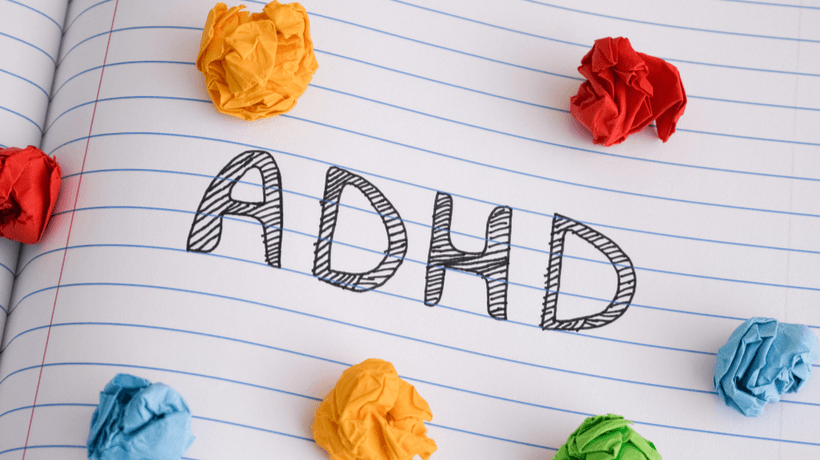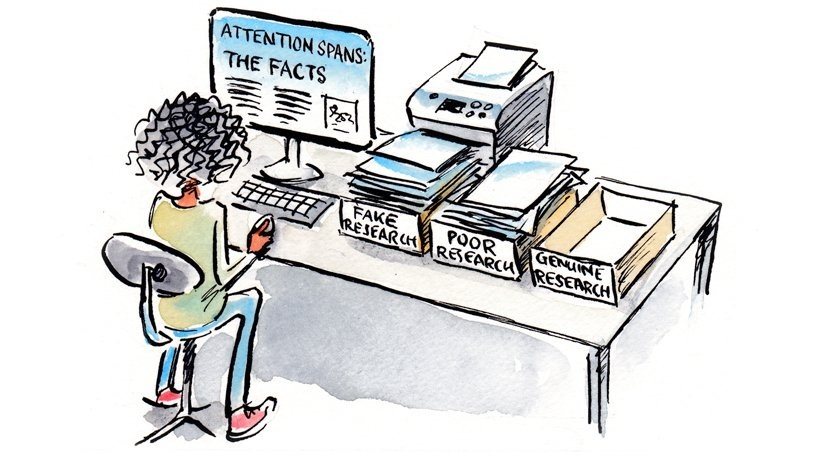Getting eLearning Right For 5% Of The Workforce
Attention Deficit and Hyperactivity Disorder (ADHD a.k.a. ADD, they’re the same thing) affects 5% of the adult population—2 million adults in the UK alone! ADHD is a combination of the inability to regulate attention (note, not an absence or deficit of it—it’s a misnomer), impulsivity, and emotional reactivity that may or may not be accompanied by hyperactivity. This can lead to issues with communication, time management, and building professional relationships. It also comes with plenty of assets such as innovative problem-solving, boundless creativity, and lots of energy.
With many companies now realizing the benefits of a neurodiverse workforce and actively recruiting for one, and the massive shift to online learning thanks to COVID, there has never been a better time to ensure our eLearning offerings are ADHD-friendly. This is especially the case if you're designing learning experiences for passion-fueled, high-intensity professionals—think police, doctors, nurses, teachers—where the number of staff with ADHD is likely to be higher. Thankfully the steps toward ADHD-friendly eLearning largely align with best practices so it shouldn’t be too much of a stretch for anyone to achieve.
Tips To Make eLearning ADHD-Friendly
1. Tidy Slides Help Messy Brains
ADHD features the inability to regulate attention which means it can be either scattered or hyper-focused. When scattered, a person with ADHD cannot get their attention to "land" on what they need it to. Instead, it flits about from one thing to the next much to the increasing frustration of its owner who is undoubtedly working hard to get it back where it’s needed. When it comes to eLearning, it’s important not to feed the flittering focus with unnecessary bells and whistles. There shouldn’t be anything on a slide that doesn’t need to be there and certainly nothing that pops up or interrupts the flow of learning. Ensuring plenty of white space and orderly layouts goes a long way to helping people with ADHD stay on track.
2. But Not Boring Slides
This is where ADHD may cause tension with some other neurodivergent conditions that might appreciate regularity and consistency. The ADHD brain is engaged by novelty and the unexpected (hence no pop-ups, see above). While it’s important for your slides to be tidy and uncluttered, it’s important they’re not repetitive or predictable if you want to maintain the interest of your learners with ADHD. Good Instructional Design practice advises using a reduced number of layouts because learners, in general, like consistency. The challenge then is to be creative with a reduced amount of layouts ensuring a fine balance between consistency for general learners and novelty for learners with ADHD. One solution could be to keep the layouts similar but to vary the interactivity within each layout.
3. Draw From Microlearning
In many ways, microlearning seems like the panacea for the learner with ADHD, but this isn’t the case. The danger with microlearning is that the learner with ADHD will complete a couple of units, put the course down and never return to it, their attention caught elsewhere and your eLearning soon forgotten. In many ways, it’s better to capture their attention upfront and try to maintain it all the way through (if this is practical for your course length). There are many principles from microlearning that can help achieve this. For example, segmenting the course into bite-sized chunks with a clear roadmap upfront and live progress tracking are all good strategies for keeping your learners with ADHD on board.
4. Build In Break Reminders
At the other end of the attention-regulation spectrum is hyper-focus. Hyper-focus is when the attention of someone with ADHD "fixes" onto one thing at the expense of literally everything else. Periods of hyper-focus can last 12-16 hours without breaks for water, food, or going to the toilet and while life falls apart around the person. While it may be tempting to capitalize on this to get a learner with ADHD through a complete program of learning, it’s much more supportive (and humane!) to build in break reminders. Better yet, build in breaks by putting a mandatory 10-minute countdown between sections. The learner may or may not take heed of the reminder but there’s no way they’ll stick around for 10 minutes of silence on a neutral screen. You’ll just have to make sure your course is interesting enough for them to want to return when the 10 minutes are up!
5. Heap Praise
People with ADHD respond amazingly well to encouragement and praise, far more than neurotypical people do. It’s always important to build positive feedback into eLearning, but when you consider that your praise will be taken to heart by learners with ADHD, it’s worth going the extra mile to make it something even more impactful. One of the simplest ways of doing this is to provide personalized feedback that uses the learner’s name and personal details. A flashier way of doing it is using an AI bot to give the feedback and making it really specific to the learner’s answers and personal details. Just make sure the bot doesn’t pop up and cause unnecessary distraction!
6. Use Real-World Problems
People with ADHD are usually excellent in a crisis and have remarkably effective outside-the-box problem-solving skills. This means they are interested in solving real-world problems that are possible, if not likely, to come up in the course of their work. Abstract problems that will never happen or facile "humorous" questions (“Should John block the fire exit? Yes or No.”) won’t keep the attention of learners with ADHD and are likely to put them off continuing the course. Instead, use real scenarios that have actually occurred, especially if they were solved using a lateral thinking approach. Ensure questions are testing and requiring some degree of problem-solving. The level of difficulty can stay relatively low but the level of required engagement should be higher.
7. Gamification Isn’t The Answer
With its badges and rewards, clear roadmaps, and manageable chunks, gamification may seem like the perfect answer to our ADHD learners’ needs. Unfortunately, too often it exacerbates some of the worst features of ADHD: hyper-focus, hyper-competitiveness, and emotional reactivity. It can take over the mindset of the learner with ADHD at the expense of everything else while encouraging them to behave in socially undesirable ways. Instead of explicit gamification, as with microlearning, it’s best to draw on the principles to create a more considered course that’s mindful of all aspects of ADHD rather than focusing incorrectly on a shortened attention span.
It Doesn’t Take Much To Be ADHD-Friendly
The number of people with ADHD is on the rise so it’s worth getting on board with ADHD-friendly eLearning and building it into your digital accessibility strategy sooner rather than later. Thankfully, ADHD learners don’t require a major overhaul of standard practice but rather just that we are mindful of their needs every step of the way.










